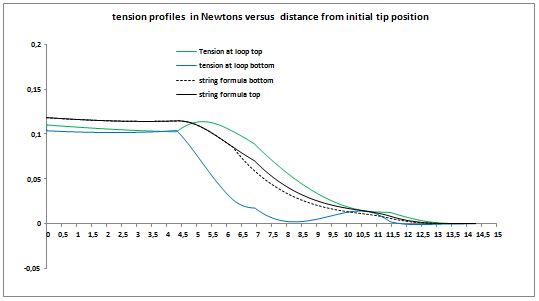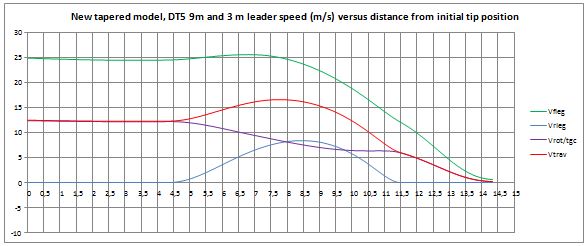Torsten,
First we should define what we mean by "analysing loop propagation" - Do we want to understand an actual cast by means of video analysis and similar tools or do we want to get a better general understanding of the physics behind it?
Personnaly I aim at a fair understanding of physics and support from video analysis to check if we are missing something or not.
Paul,
James’ opinion is that the loop propagates because the fly leg is in flight and the loop front has angular momentum (I believe angular momentum in this case is actually conserved).
And I do agree, we can add the rod leg momentum if the cast is not tethered. If fact we need to consider momentum variations of both legs and loop, including the angular momentum variation of the loop, and sorry, it is not conserved since there are non conservative forces acting on it, like skin drag for example.
Maybe you could do something along the same lines with push me/pull me, or at least try to help find resolution to this core issue.
I see a difficulty in understanding that the fly leg moves forward on its momentum and that this momentum can be changed by the tension at the top of the loop which pulls on the fly leg. It is the same problem for the rod leg if it can move (shoot, pull back, push forward, etc.). The main engine is in the fly leg, the loop is a kind of gearbox through which the rod leg can act if the caster wants to do so.
Graeme,
I'd like someone to explain why the angular momentum in the loop disappears when the tension in the rod leg is removed.
It does not disappear since the loop is able to roll over even if the rod leg is falling down (zero tension). The string like approach is unable to catch a zeroing of the tension during the flight since it directly depends on loop rotation/tangential speed. Here is an example of a push forward and you can see that tension at loop ends varies significantly by comparison to a string like approach.

- Push forward 1.JPG (26.61 KiB) Viewed 2818 times

- Push forward 2.JPG (42.29 KiB) Viewed 2818 times
What is the force causing the change of momentum at the loop front?
There are several: tension at both ends of the loop, drag forces, and momentum of the masses entering and leaving the loop.
Merlin
